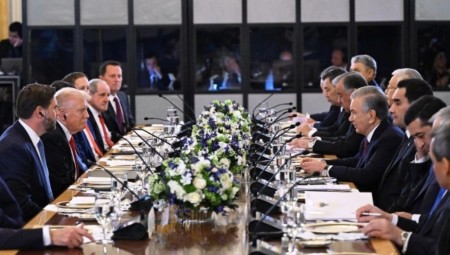Tesla is giving all its new cars the hardware for “full self-driving capabilities,” the company announced today, including 8 cameras with 360-degree viewing at up to 820 feet of distance, as well as 12 ultrasonic sensors that can detect both hard and soft objects. A new forward-facing radar helps see through rain, fog, and dust.
“The full autonomy update will be standard on all Tesla vehicles from here on out,” Musk says.
The updates are included in all new Tesla vehicles built from today forward — however, don’t expect your new Model X to be fully autonomous when you pick it up. Tesla says it needs to “further calibrate the system using millions of miles of real-world driving” before it hands your car fully over to a computer.
On the call about the new hardware, Musk said the hardware is fully capable of “Level 5 autonomy,” a big step forward.
Most significantly, new Teslas won’t have access to some safety features that older Teslas have, including automatic emergency braking, collision warning, lane holding, and active cruise control. The company says that these features will be activated after they are “robustly validated.”
“As always, our over-the-air software updates will keep customers at the forefront of technology and continue to make every Tesla, including those equipped with first-generation Autopilot and earlier cars, more capable over time,” said the Tesla statement.
In essence, it reads as though Tesla has put together a better, more powerful hardware system for these safety and autonomous driving features, but this new system isn’t going to be ready for real use right away. That’s a disappointing dip in the road, but apparently a necessary one.
Musk says that the “Tesla Neural Net” doesn’t require any third party hardware sensors, and that it’s based on the Nvidia Titan GPU (although it could run on other processors). He says that it’s 40 times more powerful than the last Tesla computer, “it’s basically a supercomputer in a car,” he said. “We go from one camera to eight cameras,” Musk said. Three of them are forward cameras, for redundancy, and the rest provide “360 coverage” for the rest of the car. The new Teslas will also have 360-ultrasonic sonar.
“I think is is very hard to turn into a kit,” Musk said, so it won’t be sold to other car makers. All the cameras and sensors he is talking about won’t cause “weird protuberances” or make the cars look funny.
Musk also promised a demonstration of a fully autonomous drive from Los Angeles to New York by the end of 2017. Musk largely begged off talking about what the regulation would or should be but he did note that the computer will “always be running in ‘shadow mode,’” so that he can build the case that his self-driving software would have been safer than human drivers.















